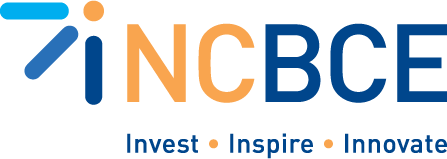After refining and establishing your help desk program, Amplify your tech team’s reach within the community and expand your students professional network.
Engage with Your Technology and Business Community
A critical piece of work-based learning is building the student’s professional network. Here you can examine opportunities for your teachers and students to grow working relationships with North Carolina technology and business communities.
NC Connect - Industry Partnerships
Build out Your Social Network Presence
Earlier “help desks” were exactly that, a desk where teachers and staff could go or call in, and get help fixing their computers or troubleshooting software issues. Technology services and accessing services looks entirely different today. First, with the shift to 1:1 where schools put devices in the hands of every student, the sheer volume of devices would overwhelm old help desk models. Tech Teams now must provide multimedia resources and outreach in order to effectively serve their school and district communities. Below are some examples on how to scale the help “beyond the desk.”
Moving Physical Desks Online
During the global COVID pandemic, student help desks saw a new iteration, as devices and students were forced to go remote. Hayhurst (2020) described that in Bethlehem Central School District (NY) and Burlington High School (MA), the increase in devices and remote learners (including students who run the help desk) necessitated the integration of new processes and technology to allow tech team students to assist from their homes. These shifts in process included remote desktop access, increase in video tutorials, and pushing out assistance to social media channels.
Video Tutorials and Web Casts
At Burlington High School (MA), students design and produce a series of technology tutorials for common problems that would eat up time resolving one-on-one. The team also produces student-led webcasts in their “HelpDesk Live” series, where they interview teachers, tech entrepreneurs, and fellow students on all things technology.
Leverage Social Media
Currently, many student help desk programs communicate via email, ticketing automations, and their teams website. Some programs are beginning to push into social media as a way of expanding their audience. Tech team websites also provide space for student run blogs and spaces to showcase passion technology projects. Some teams are expanding the promotion of their hard work into Twitter. For example, York High School in Elmhust, IL (@York_TSI) leverages Twitter to announce and promote device deployment and upgrades, educational technology trends, and pictures and learning from their team’s “boot camp” sessions. Beekmantown Central School District’s help desk promoted its robotic compet
Build Community Within Your Tech Team
Recruiting and bringing together students with common interests in technology is a great start; however, building camaraderie and a sense of team will likely impact your students’ retention and success on the Tech Team. Before a Tech Team can establish itself and expand by bringing on new students and engaging with the larger school and business communities, it is critical to first define team norms. Below are some resources for engaging students in the design and implementation of a Tech Team Norms Contract.
Infusing Norms with Team/Class Values
Jen Cort (2020) emphasizes engaging students in the collaborative development of classroom norms and specifies to start with the value at the center. Cort offers the example of a teacher who wanted remote learners out of their beds when class started. When the teacher identified that the value for the norm was to be dressed and “ready to learn” students privately came forward and told her why they were in bed (e.g., embarrassed to show the rest of the room shared with siblings, felt scared by pandemic and felt safe in bed). The norm then became that students could be in beds but had to be dressed and “ready to learn” (value) and could have a virtual background for privacy (value) if they chose. Cort also emphasized the importance of revisiting intentional norms with students and being open to adjusting if needed.
Implement Norms in Teaching and Provide Reflection Tools
Anne Vilen (2017) shares key information for improving collaboration through the use of modeling, norms, and protocols. Vilen offers specific templates to help students guide the process of norm setting around everything from classroom noise levels to how students will hold themselves and others accountable in their learning.
Building Leaders and Setting Expectations
Students on the Tech Team gain critical skills interacting and engaging with school faculty and staff. While the school’s service model and coursework can reinforce leadership, professionalism, communication, and teamwork skills, it is important to reinforce this with the team members in role expectations. For example, students at Burlington High School (MA) need to apply to be on their student help desk, must maintain a strong GPA, and organize and lead school conferences, web casts, and social media campaigns.

 Dell Technologies
Dell Technologies